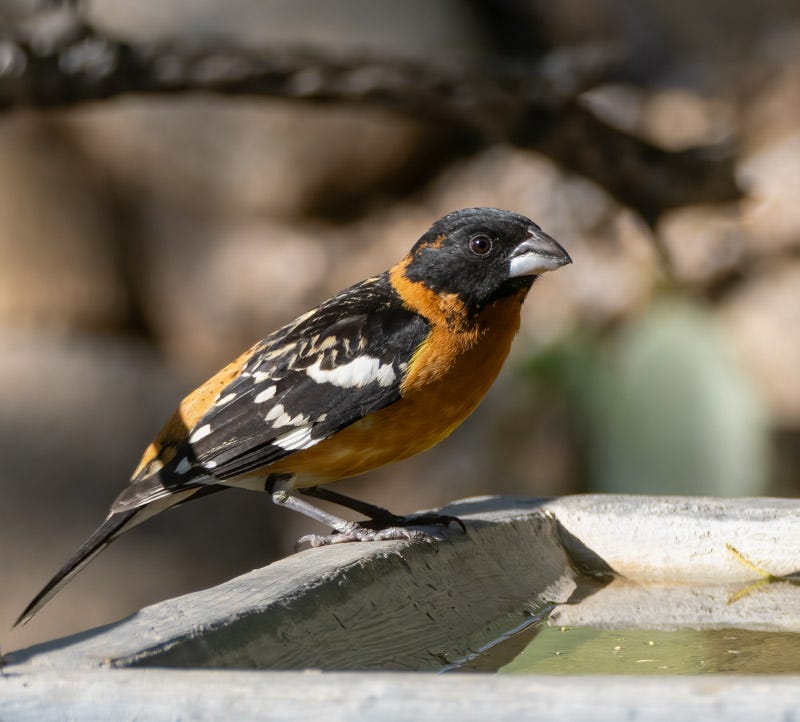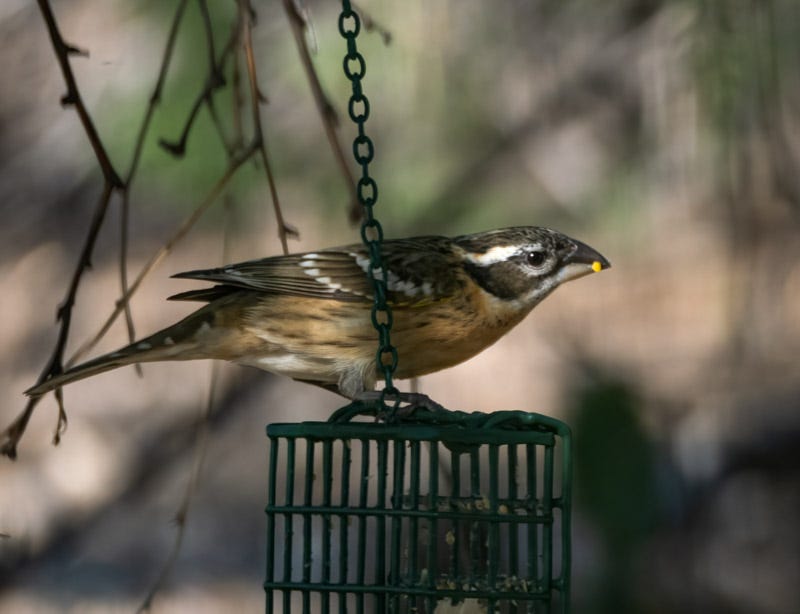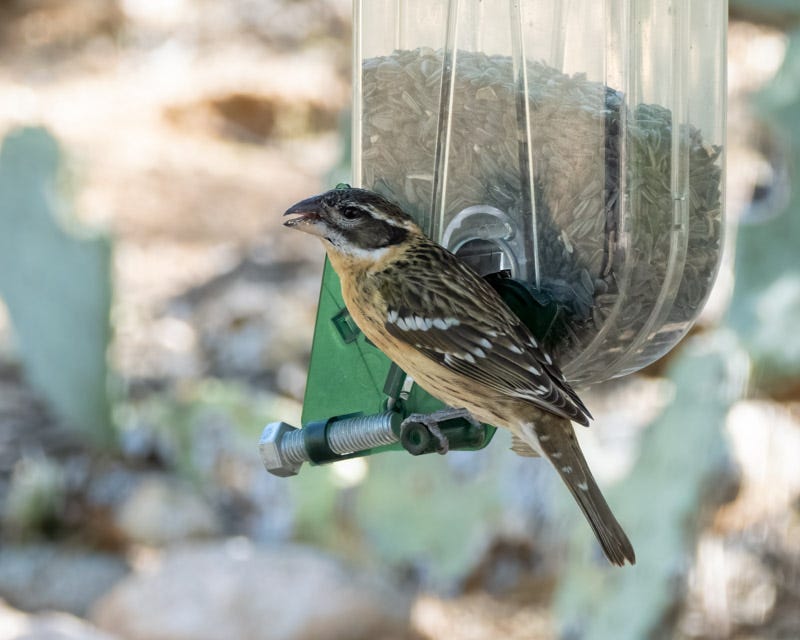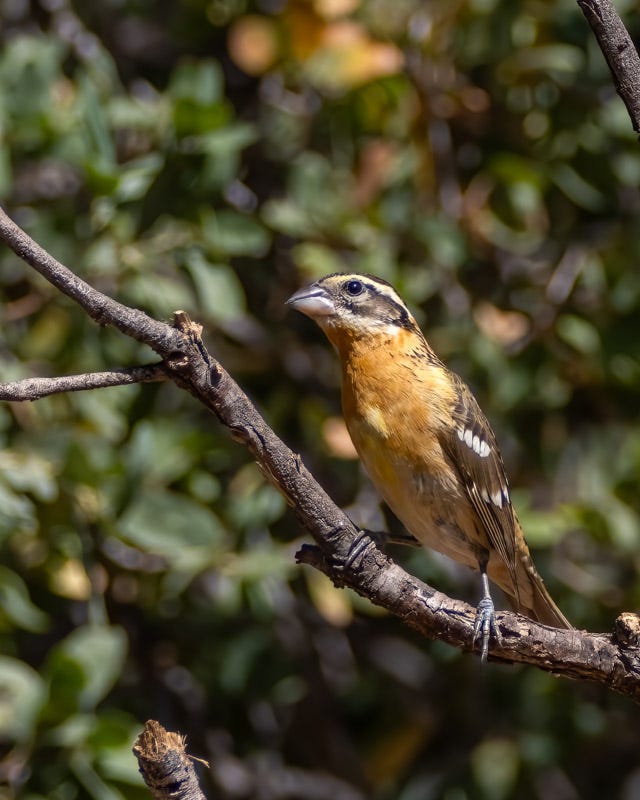Some Rare Birds
These birds are not very common in the urban Tucson area
The first of two birds featured in this email is not really rare in the Tucson area but if it is seen, it is seen only briefly during its migration. In summers, it can be found at higher elevations than in the Tucson area on the mountain slopes of southern Arizona. On May 4, I was excited to see this male Black-headed Grosbeak at my birdbath!
The last time I had seen a Black-headed Grosbeak in my yard was three years ago, On May 20, 2021. Within minutes, I saw a second Black-headed Grosbeak. Although immature male Black-headed Grosbeaks can look like the females, I was certain this second bird was a female. Since it was the start of the breeding season, it made sense that the pair of male and female birds would be migrating together.
Both birds were filling up on food. After eating for a while, they both flew off. Black-headed Grosbeaks were seen in the Tucson Valley during about a two week stretch in May, but not since. I imagine that the wave of migration happened then and that all of those birds are now at the elevations they wanted to be at for the summer.
The range map below, taken from the Cornell Lab of Ornithology's allaboutbirds.org site, shows where Black-headed Grosbeaks live during winters and during their breeding season. In southern Arizona, they can be found above about 3600 feet elevation in mountain canyon groves and higher elevations.
When I was at Ash Canyon in the Huachucas in April, I saw several Black-headed Grosbeaks. That is their summering habitat. So here was a male that I saw there:
And here was a female. While common at this higher elevation, they are uncommon in the Tucson area other than during migration season while they are passing through on their way to their breeding grounds. Birdnote lets us know how these Black-headed Grosbeaks sound on their breeding grounds: https://www.birdnote.org/listen/shows/black-headed-grosbeak-sings
Now the next bird that I saw really was a very rare bird for Tucson. I heard reports that another Grosbeak, a Rose-breasted Grosbeak, was in the area. To see how special it was for this bird to appear in Tucso, check out Cornell's range map. You don't see a lot of color in most western states. If anything, there is yellow which denotes areas of migration. Rose-breasted Grosbeaks breed only as far west as the middle of some Great Plains states.
A male Rose-breasted Grosbeak was reported at Sweetwater Wetlands on June 1. I ran over there and was fortunate to get some nice looks at it and also a nice picture. This bird has the same body type and shape as the Black-headed Grosbeak and both are in the Cardinal family but they are different species. Interestingly, this Grosbeak was hanging around with a Black-headed Grosbeak at Sweetwater.
It remained at Sweetwater for another five days before disappearing. You wonder how this bird got here, so far off course. And you hope the bird was able to figure out how to get back to the area where it should have been. Still, it was a treat to see it.









